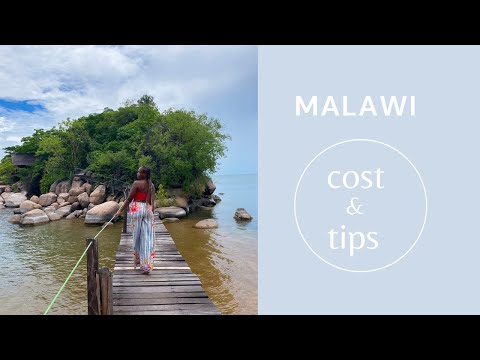
Malawi, often referred to as the “Warm Heart of Africa,” is renowned for its friendly people, scenic landscapes, and rich cultural heritage. From the stunning shores of Lake Malawi to the breathtaking heights of Mount Mulanje and the wildlife-rich Liwonde National Park, Malawi offers a unique experience for travelers seeking adventure off the beaten path. However, like any travel destination, understanding the costs and having some travel tips can make your journey smoother and more enjoyable. Here’s what you need to know about traveling to this beautiful African nation.
#### Cost of Traveling to Malawi
**1. Flights:**
Flights are usually the most significant expense when planning a trip to Malawi. Costs can vary widely depending on your departure point, the time of year, and how far in advance you book. Generally, round-trip flights from Europe or North America can range from $800 to $1500 USD. To find the best deals, consider booking several months in advance and be flexible with your travel dates.
**2. Accommodation:**
Malawi offers a range of lodging options, from luxurious lakeside resorts to budget guesthouses and camping sites. On average:
– Budget accommodations cost around $10-20 USD per night.
– Mid-range hotels or lodges typically charge between $50-100 USD per night.
– Luxury accommodations can exceed $150 USD per night.
**3. Daily Expenses:**
For meals, local transport, and incidental expenses, budget travelers can expect to spend around $20-30 USD per day. Those preferring more comfort or guided tours might spend anywhere from $50 to $100 daily.
**4. Activities:**
Tourist activities also vary in cost:
– Safari game drives in national parks like Majete Wildlife Reserve might cost upwards of $100 USD for a day trip.
– Boat trips on Lake Malawi can range from $20 to several hundred dollars depending on duration and exclusivity.
– Hiking excursions such as those at Mount Mulanje might cost between $30-$50 USD for guides plus additional fees for overnight stays in mountain huts.
#### Travel Tips for Visiting Malawi
**1. Best Time to Visit:**
The best time for visiting Malawi largely depends on what you want to do:
– For wildlife viewing in national parks, visit during the dry season (May to October), when animals congregate around water sources.
– For beach holidays along Lake Malawi’s shores, August through December offers warm temperatures ideal for swimming.
**2. Health Precautions:**
Consult with a travel clinic well before your trip regarding necessary vaccinations (like yellow fever) and malaria prophylaxis. Always carry mosquito repellent and practice safe drinking habits — bottled water is widely available.
**3. Cultural Sensitivity:**
Malawians are known for their hospitality but showing respect towards local customs is essential:
– Dress conservatively outside major tourist spots or beach areas.
– Always ask permission before taking photographs of people.
– Learn a few phrases in Chichewa; even simple greetings can go a long way towards showing respect.
**4. Transportation Within Malawi:**
While domestic flights are limited mostly between Lilongwe and Blantyre, an extensive bus network connects most towns:
– Small minibuses or shared taxis often offer more affordable options but expect longer times.
– Renting a car gives more flexibility but ensure you’re comfortable with unpaved roads especially in rural areas.
**5. Safety Measures:**
While generally safe, it’s wise to follow standard safety precautions:
– Avoid walking alone at night.
– Keep valuables secure and out of sight; use hotel safes where possible.
– Take advice from locals or your accommodation regarding any areas to avoid.
Malawi remains relatively unexplored compared to its African neighbors but offers an incredibly rich experience with its natural beauty and cultural richness. Planning financially ahead and respecting local traditions will ensure that your visit is both enjoyable and respectful — true qualities reflecting the spirit of Africa’s warm heart!
